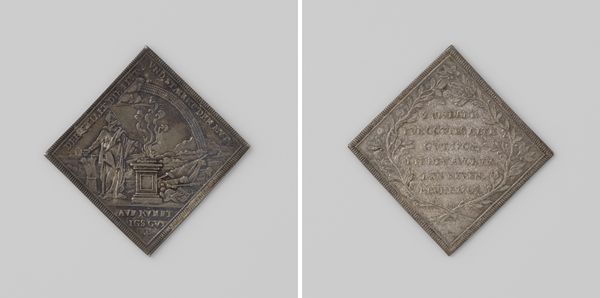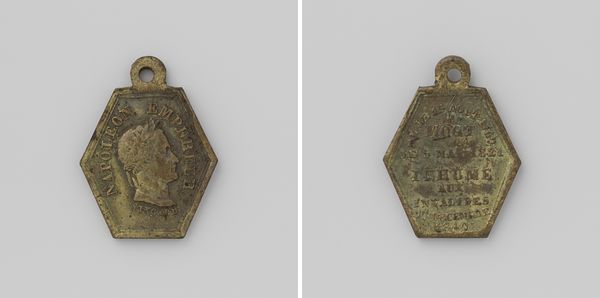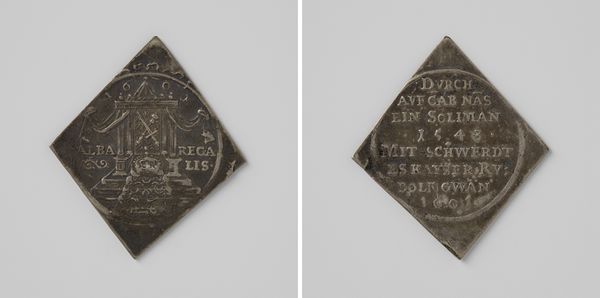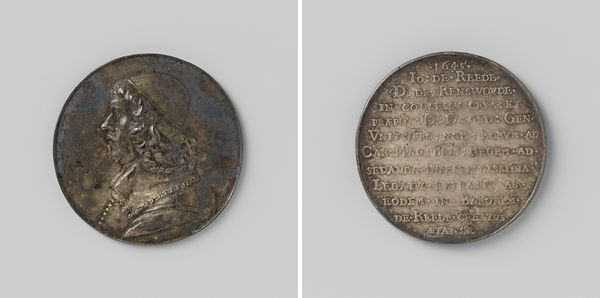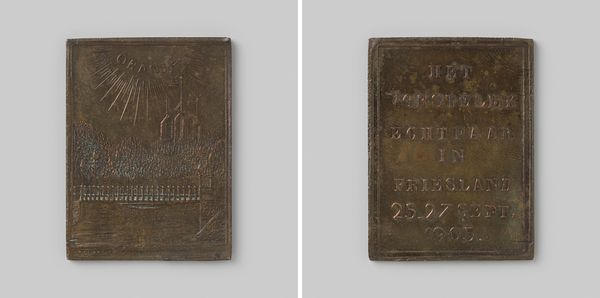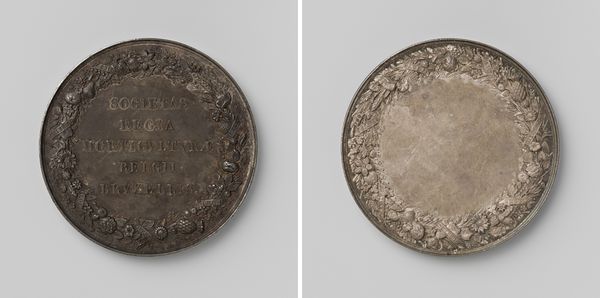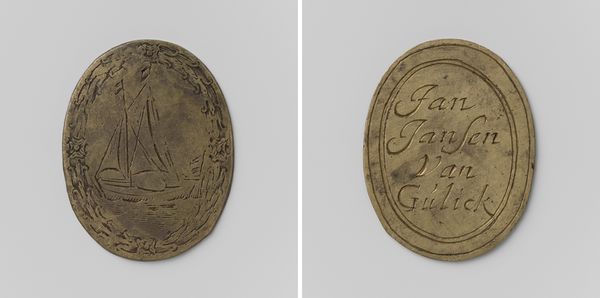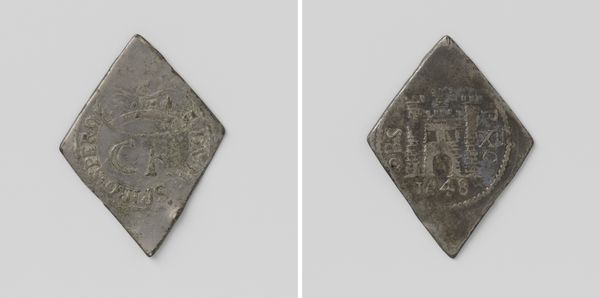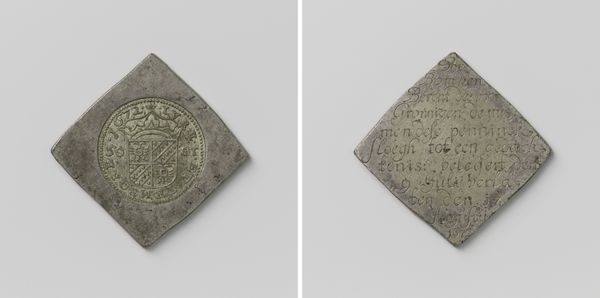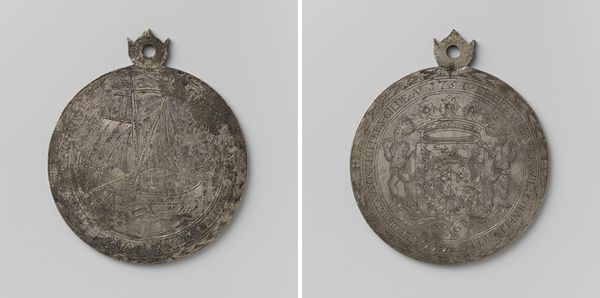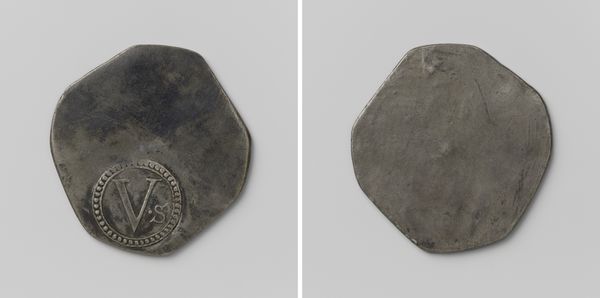
metal, sculpture, engraving
#
portrait
#
metal
#
sculpture
#
sculpture
#
history-painting
#
engraving
Dimensions: height 4 cm, width 3.4 cm, weight 16.97 gr
Copyright: Rijks Museum: Open Domain
Curator: Here we have an intriguing metal engraving from 1649 entitled, "Overlijden van Jacob Jansz van Loosen, vaandrig der schutterij," commemorating the death of Jacob Jansz van Loosen, a flag-bearer of the civic militia. Editor: My first impression is the cool, almost metallic mood. The engraving itself has a spare, formal elegance. I'm drawn to the precision of line and the balanced composition. Curator: The death of a militiaman immortalized on what appears to be a commemorative plate speaks to the historical importance of civic defense during the Dutch Golden Age and also invites questions about what societal function such engraving would perform at the time of creation. Editor: Right. I find myself focused on the visual language itself. Look at the engraver's economical use of line to delineate form. Note the inscription that seems almost like an ornamentation on the reverse side of the metal work. It almost has the appeal of concrete poetry. Curator: Considering this object's existence as a marker of Dutch civic identity—that the memorialization of militiamen and burghers reinforces narratives of collective belonging, suggesting that even in death, individuals contribute to the ongoing story of a community—this really provides unique insight into a society. Editor: Absolutely, and beyond its function, one cannot deny its formal complexity. The text is artfully rendered on one face of the engraving, functioning as a contrasting design element against the representational side. The composition adheres to principles of symmetry and balance, common aesthetic priorities during the seventeenth century. Curator: But there's a vulnerability within this commemorative gesture, pointing towards issues of mortality, military engagement, and societal memory. Who had access to the engraving? How were communal memories formed through material culture? These concerns take hold for me. Editor: Those are relevant factors, of course, but let us admire the artwork's aesthetic appeal, not merely reduce the form to its historical usage. Consider how form contributes to cultural significance; visual rhetoric adds richness to our perception of meaning in Jacob’s representation. Curator: Ultimately, this small, historical artifact shows us the deep relationship between societal needs, grief, and commemorative practices that connect the visual image with lasting social meaning. Editor: Yes, it's also quite a compelling encapsulation of an era—perfectly balanced between functionality and visual allure, where every line is intentional, communicating through material itself.
Comments
No comments
Be the first to comment and join the conversation on the ultimate creative platform.
